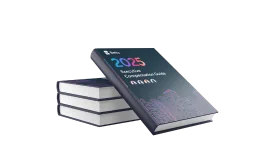It is challenging to make a virtual presentation both interesting and engaging. If you have ever attended one with technical difficulties or one where no one seemed to be paying attention, you know the problem first-hand that comes with virtual presentations. People have associated virtual presentations with boredom or work breaks. But, there are things you can do to prepare so that you are able to grab your virtual audience’s attention:
- Prepare ahead of time
Your presentation is coming up, and you’re feeling the nerves kick in, which is normal! Preparing ahead of time is a great way to get rid of some nerves and boost your confidence. You should make sure your audience has been invited/have the link to your meeting and that your agenda is laid out clearly. Everyone should know the purpose of your presentation beforehand. Making sure your platform’s audio and visual settings are good to go can save time and prevent technical issues during the call. If your boss or mentor oversees your presentation and sends you content to present, you should review all of it just in case you might have any questions. Preparing ahead is necessary to avoid any last-minute rush. Attire and a clear background should also be thought of and set up ahead of time.
- Be timely
Show up to your presentation on time. It is disrespectful to your attendee’s time if you don’t show up or are ready to start on time. Your agenda is set, and room for questions is always last, so you need to stick to the schedule and not go over time. Without a real-time visual audience that provides feedback cues, knowing how well you are pacing is difficult. Some audience members might even have their cameras off, making it even more challenging to see feedback cues. It is important to not present with too much speed and practice slowing down. Some audience members might even be experiencing a lag or poor audio output which is why it is important not to speak too fast. As long as you are hitting the main points that you have rehearsed, tiny details can always be addressed at the end during the Q&A.
- Speak to the camera
You must stare directly at the camera in a virtual meeting and not at the screen. Many people have trouble doing this since you want to ensure you’re hitting every point, which is easier to do when staring at the screen and reading the slides. It would be best to teach yourself that the camera is now your audience. Keep refocusing your gaze on the camera when you look up and try to memorize your script so that you don’t have to look away. Some people have a bad habit of touching their faces when presenting. Do not do this, or you will distract the audience from what you’re saying. Staring at the camera captivates the audience and is something you must teach yourself to do every time you are presenting virtually.
- Minimize body movement
Body movement is still an essential part of presenting, even when you are online and sitting down. An ideal way to go about it is to make as little body movement as possible. Constantly turning from side to side could tell other participants that you’re not paying attention and are distracted by something in the room. Constantly shifting around your seat can come across as you being uncomfortable in your own space, making the presentation uncomfortable. Posture is super important. Make sure you’re alert and not slouched down. Slouching in your seat is very casual and can make you appear unprofessional.
- Wrap up professionally
A great conclusion can make a significant impact on the audience. How you end your virtual presentation is vital to the overall message you are trying to get across. It would help if you had your closing remarks prepared before the presentation began. Summarize the main key points. Speak louder and politely at the end. Remind the audience how much time is left before opening up the floor for questions. Lastly, as a host, you are responsible for ending the presentation once everyone is done talking. A friendly “goodbye and thank you for listening” or some variation of that is always the best way to end a virtual call.
A presentation online might feel different than one in-person and can even feel like you’re just talking to yourself. However, as long as you follow these tips and follow the usual ground rules of a presentation, you will be wonderful. If you are interested in remote opportunities, join our community at bettsrecruiting.com.
